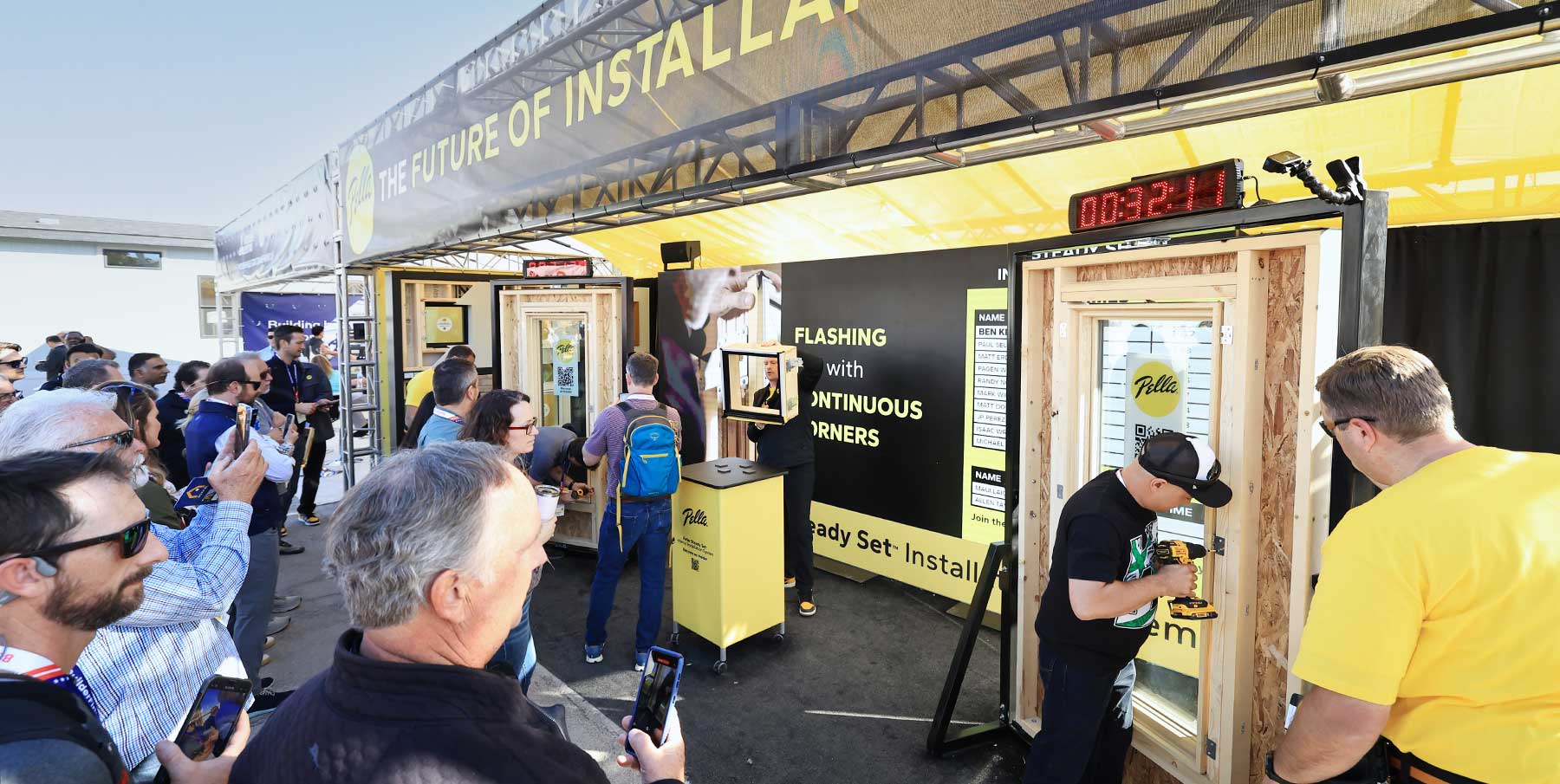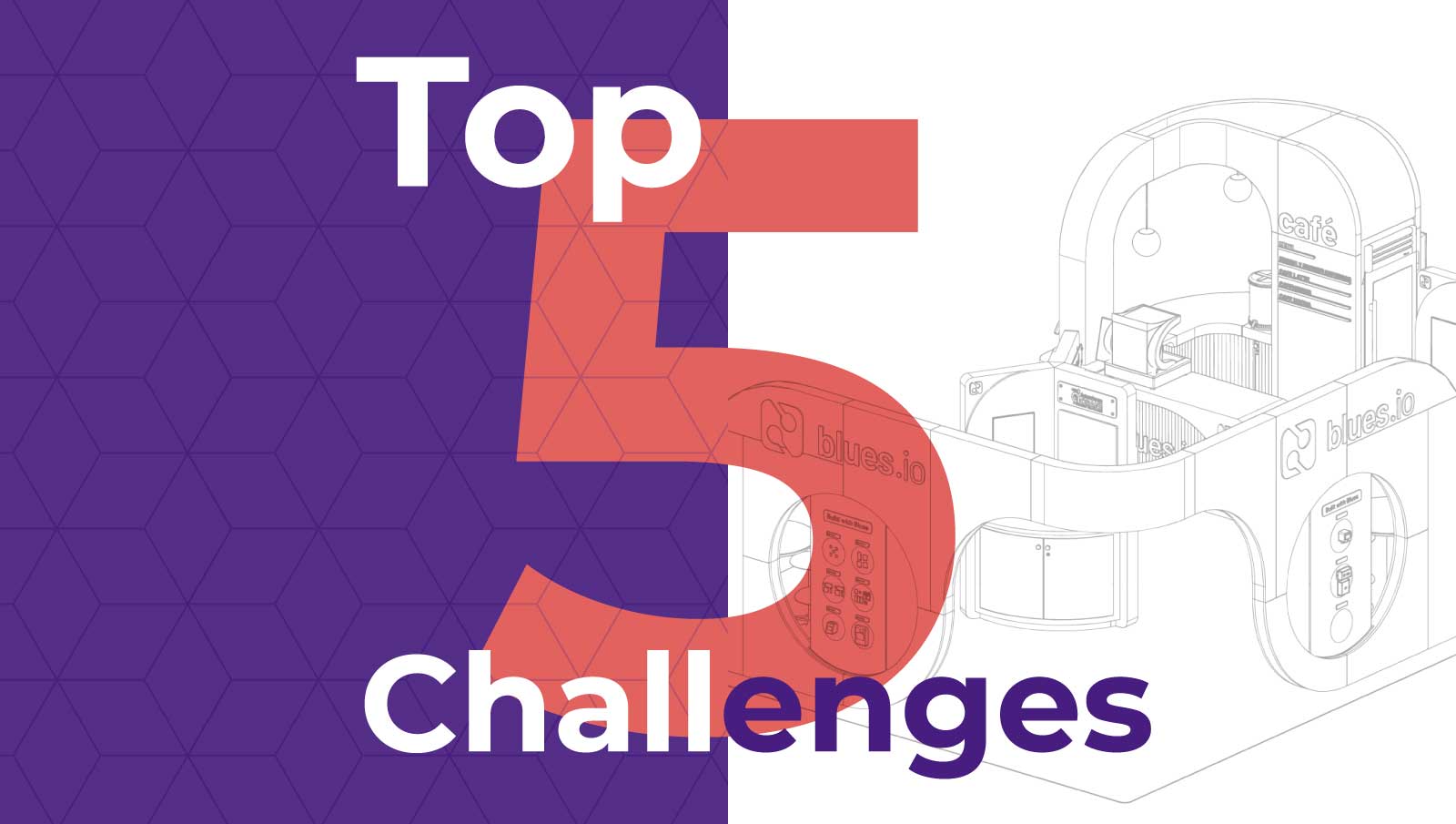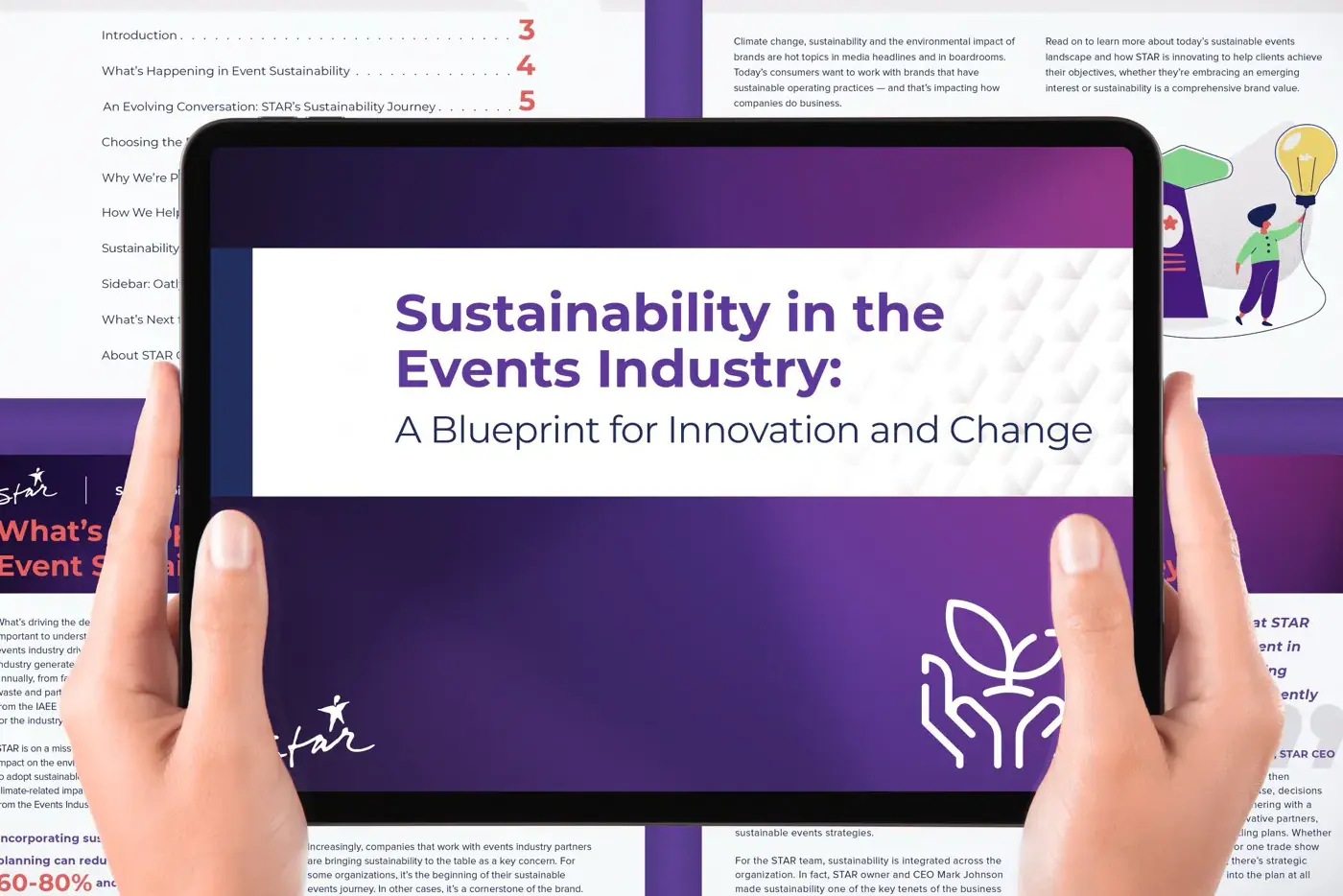Table of Contents
Introduction: Understanding Experiential Marketing Strategy
Experiential marketing moves fast. There’s always pressure to meet quick deadlines – whether you’re building a dynamic exhibit to generate trade show leads, planning an atmospheric marketing event that tells your brand story, or installing an eye-grabbing retail interior that converts browsers into buyers. At the same time, marketing teams are working with leaner resources, tighter budgets, and shorter timelines, which makes it difficult to keep up with demanding event schedules and comprehensive campaign slates.
However, one area within experiential marketing campaigns is often overlooked: the power of strategy to help deliver greater performance, efficiency, and effectiveness – both in a single project AND across a series of initiatives. Strategy ensures that every aspect of the project aligns with the client’s objectives, enhancing the overall impact and effectiveness of their event presence and marketing initiatives.
Brands may feel that the pace of execution limits the time that can be devoted to strategy or in-depth planning. They assume strategic work takes a long time or is costly to complete. But successful marketing leaders are increasingly recognizing that incorporating a strategic phase in every project drives better results. In fact, strategic projects can actually drive more time-efficiency and cost-effectiveness, while also enhancing business outcomes.
Most people assume that involving strategy in a project is going to be expensive and take forever. But if strategy is built into projects upfront, it can do the opposite – it can streamline processes and maximize resources. Justin Dworak, STAR President
Let’s take a closer look at how experiential marketing strategy can help engage your customers and take your brand marketing efforts to the next level.
Benefits of Prioritizing Strategy within Experiential Marketing
Strategy is a multi-faceted approach that extends far beyond the initial stages of planning and creative concepting. It encompasses all major touch points from setting the foundation for innovative ideas to ensuring that you have detailed ROI analysis and metrics in place for a performance post-mortem. Organizations that implement this level of strategic planning as part of their experiential marketing often cite the following benefits:
Accomplishing more through strategic collaboration:
Strategic collaboration over the course of a marketing partnership enhances overall impact by fostering a deep understanding of the client’s business and goals, and focusing on that throughout all elements of the project. Strategic collaborations also allow different teams, from account management to design to shipping, to work together seamlessly with a clearer understanding of how each element supports the brand’s larger vision.
While strategic services can support a single project, they can be deeply transformative over the course of a long-term client and partner relationship. A marketing firm can partner with a brand to better understand their goals, explore how to allocate resources, and create programs on gathering feedback that lead to iterative improvements throughout the relationship lifecycle.
Justin Dworak, STAR President
Informing decision-making with best practices and data:
Strategic planning – particularly when done with an experienced partner – allows for a stronger grasp of best practices, ROI and metrics for informed decision-making. The ability to provide real-time performance data and benchmark comparisons allows brands and their experiential marketing partners to adjust on the fly, ensuring that clients can achieve their goals more efficiently.
“For CMOs or communications directors, allocating budget and understanding what’s effective and what’s not effective are fundamental decisions. Introducing similar tools to provide ROI data and best practices for exhibiting can help clients make better decisions about budgets and increase their experiential marketing effectiveness,” says Dworak.
Differentiating from competition:
Trade shows, events and retail environments are well known for their visual clutter, making it extremely challenging for brands to stand out from competitors. Experiential marketing strategies that include competitive analysis help brands truly understand and express how they are different than the competition, and how to clearly articulate their unique value proposition. Strategic insight scan help you focus on both elements in communications and planning, such as finding creative ways to tell your company story through retail and corporate installations or standing out from the competition when you’re conceptualizing trade show booth builds.
Working with a blueprint for future projects:
Investing time in strategy for a single project or campaign can certainly help make it more effective. But it can also provide a north star that delivers important benefits across all of a brand’s experiential marketing initiatives, including trade shows and events, retail installations, and atmospheric brand marketing for corporate environments. The ultimate impact derived from strategic insights is seen when they are applied across a range of activities as part of a larger, ongoing effort.
By applying strategy in the right way, brands can align concepts and executions to broader business goals, develop plans to maximize return and engagement, and create a plan to measure the ROI of their investments.
The STAR Approach: 5 Areas of Effective Strategy Development
With decades of experience implementing strategic services and rigor into client projects, STAR has developed a framework for delivering strategic impact on five core levels:
1. Enhancing Exhibit Effectiveness
Strategic planning in the early stages of any project helps clarify client goals and is crucial for aligning exhibit designs with client objectives, delivering the intended message, and ensuring that the final output is engaging and memorable for attendees. Strategy planning also provides context for creative teams to innovate and try new things, whether the goal is to amp up engagement or help a brand differentiate from competitors.
2. Maximizing Event Presence
Strategic planning goes beyond just the design and construction elements of a build, and it incorporates broader elements such as pre-show marketing and optimizing the overall event presence. Through a strategic lens, it’s possible to answer questions such as how to make the most of an event and whether there are opportunities that a brand may be missing. For instance, a heavy presence in the lobby or having speakers at key locations can significantly enhance a brand’s visibility and engagement for a specific event. This comprehensive approach ensures that every aspect of the event is maximized for impact.
3. Annual Planning Support
Strategic planning includes assisting clients in annual planning, such as budget allocation and event selection to maximize the utilization of their marketing funds. It can also help ensure that the marketing mix across a campaign or an annual show schedule is optimized to achieve their goals. This support ensures that clients can make informed decisions about their marketing activities throughout the year and that execution partners have a high-level view of how individual projects work together synergistically.
Strategic planning – particularly when done with an experienced partner – allows for a stronger grasp of best practices, ROI and metrics for informed decision-making. The ability to provide real-time performance data and benchmark comparisons allows brands and their experiential marketing partners to adjust on the fly, ensuring that clients can achieve their goals more efficiently.
“For CMOs or communications directors, allocating budget and understanding what’s effective and what’s not effective are fundamental decisions. Introducing similar tools to provide ROI data and best practices for exhibiting can help clients make better decisions about budgets and increase their experiential marketing effectiveness,” says Dworak.
4. The Strategic Edge ROI and Measurement
As part of strategic planning, developing robust measurement frameworks and clear KPIs can inform decision-making and help build the business case to justify investments in trade shows and other marketing activities. ROI and measurement for effective exhibits is now being supported by both strategic planning and technology. Technology can be used to measure booth engagement, the sentiment of conversations at events, and much more. By emphasizing ROI and measurement, clients can clearly see the value of their investments while gathering unique data that informs and improves their strategies.
Trade shows, events and retail environments are well known for their visual clutter,making it extremely challenging for brands to stand out from competitors. Experiential marketing strategies that include competitive analysis help brands truly understand and express how they are different than the competition, and how to clearly articulate their unique value proposition. Strategic insight scan help you focus on both elements in communications and planning, such as finding creative ways to tell your company story through retail and corporate installations or standing out from the competition when you’re conceptualizing trade show booth builds.
5. Foundational Strategy Development
Strategy can also help organizations ensure that the key elements of their branding are in place. Foundational strategy development helps fast-moving brands solidify the fundamental elements including overall messaging, brand visuals, and event alignment with client objectives. By addressing these fundamental elements, STAR ensures that our clients’ strategic frameworks are rigorous and aligned with their overall goals.
“ROI and measurement for effective exhibits is now being supported by both strategic planning and technology. Technology can be used to measure booth engagement, the sentiment of conversations at events, and much more.”
Justin Dworak, STAR President
Embedding Strategy with Creative for Maximum Impact
Within experiential marketing, embedding strategy with creativity as part of the overall project structure is the key for maximum impact. Creative teams have the capabilities to bring strategic insights to life, while strategy can help better define what elements of a brand story or customer experience should be the focus during creative ideation and development. Incorporating strategic thinking can allow creative teams to develop more innovative work while ensuring that concepts and designs align with overall branding and company objectives. Strategic and creative synergies make sure that projects are not only strategically sound, but also visually and experientially captivating. The initial strategic framework guides the creative process, allowing for the development of ideas that are both imaginative and strategically aligned with a brand’s goals.
By focusing on strategy, brands are able to more effectively harness creative capacity. As brands consider opportunities to integrate strategic planning with creative talent, it’s important to look closely at your partners. Ideally, a partner should bring strategic expertise, tools, processes, and staff to the table so that they can better understand what you’re trying to achieve, and embed that vision into any project that moves forward. Across the lifecycle of a series of projects, strategic insights can help deliver a uniform customer and brand experience. They also maximize the return on your investments over the course of the year by making it easier to measure performance and support you ability to continue iterating on success.
The fun, interesting, and innovative aspects of strategic collaborations come to life in partnership with creative teams. They’re the ones with the imagination and the creativity to develop the core creative ideas and brainstorm exactly what experience we want to create for attendees in the spaces that we’re developing.
Justin Dworak, STAR President
Strategy in Action: A Case Study
Pella Corporation is an internationally known door and window manufacturer. As a STAR client for nearly three decades, the two companies have collaborated across a variety of projects including trade show booth builds, retail installations, and corporate events.
After a decade hiatus from participating in trade shows, the Pella marketing team decided to go to the biggest industry building show in the U.S. – the NAHB International Builders’ Show (IBS)® – to introduce a revolutionary new product. The Pella Steady Set interior installation system is the industry’s first interior installation system for new construction. Instead of requiring multiple people and ladders outside, workers can install the window in new construction from inside the building. For construction firms on tight timelines and with limited staff, this product had the potential to solve crucial buyer challenges for speeding up and simplifying window installation.
For Pella, the goal was simple: maximize engagements and leads. But competing for attention at a significant industry event, particularly when they didn’t have a premium location for the show, required maximizing their space with a highly attractive, engaging, and educational installation The strategy and creative teams worked together at STAR to develop the best possible plan. Ultimately, by understanding Pella’s business, audience, and long-term objectives, the STAR team built an experience that would draw people in by focusing on Pella’s customers’ key challenges. Within construction, there’s a very real concern that innovative new products sound great but aren’t proven. The risks of adoption without proof can be too high.
Strategy in Action: A Case Study The Strategic Edge As a result, the design was very focused on demonstration, including how the window installation system worked, as well as hands-on components that allowed contractors to try the installation process for themselves. Ultimately, the company generated three times the leads they expected at the show, and the product launch was a success. In fact, Pella Steady Set was recognized during the 2024 IBS show with the prestigious Best of IBS Awards which celebrates the most innovative and impactful products and solutions in the residential construction industry. Building on the success of the product launch at IBS, Pella commissioned the creation of a branded Sprinter van designed to continue to support the Steady Set launch. The mobile demonstration vehicle offers the ability to train and work with builders in an on-the-go fashion to continue the innovative, streamlined marketing that the construction industry demands. Whether it’s introducing the product to new customers or providing hands-on training, the Sprinter van has created a new way to reach key customer audiences.
Pella’s marketing strategy has also extended to working with STAR on a multi-year initiative to support its private sales distribution network. Each of the corporation’s 80+ locations include a branch destination showroom. The STAR team worked with Pella to design and deploy the setups for those showrooms, including floor planning, builds, and ongoing maintenance throughout the long-term partnership. Part of the most recent updates involved designing and deploying dynamic suspension systems that would make the most of the vertical space in showrooms to display windows. However, the locations vary and have different structural elements, ceiling heights, and even seismic requirements.
STAR Creative and Engineering worked together to build a system that could deliver a uniform experience built on Pella’s vision while adapting to the realities of different showrooms. The companies’ long history of collaboration and shared deep strategic understanding of Pella’s goals have allowed them to work together to help capture a strong ROI on both single events and ongoing initiatives. STAR looks forward to continuing to support Pella in its innovation within the construction industry for years to come.
Choosing the Right Strategic Partner
One of the easiest ways to seamlessly incorporate strategic thinking into marketing campaigns is to work with an experienced partner that offers strategic expertise, tools, and processes as part of their client engagement model. When choosing a partner to deliver strategic planning and advisory services, some questions to consider include:
- Is strategic planning integrated with their larger design,build, and support services as a core element of the project?
- Do they have the capacity to deliver strategic services quickly and cost-effectively?
- Can they support your strategy needs for a one-off project such as a retail design or trade show exhibit, as well as more broadly for brand development or annual planning?
- Does the company embed strategy across the organization, so that you can reap benefits from their strategic insights from creative design through post-event analysis?
- Can the prospective partner help you identify strategic needs that support broader success, such as staffing models or opportunities for greater visibility at an event?
- Are they willing to take a specific request, such as a brand value like sustainability, and develop a comprehensive strategy that impacts everything from the core concept to how components are sourced?
- What approach does the company take to developing plans to assess success, including KPIs, clear brand goals,and metrics to better understand ROI?
- What technology tools do they bring to the table to help measure performance and gather data for ongoing improvements?
- Are there strategic specialists on staff with a unique understanding of the experiential marketing space that can use their expertise to foster unique insights?
Conclusion
Whether you’re seeking a way to elevate your entire experiential marketing program or want to get the most out of a single trade show project, strategic thinking is an important market differentiator. Strategic partnerships yield results in driving greater client success while maximizing both impact and effectiveness. Strategic thinking not only enhances the creative process, but also ensures that every aspect of a project is aligned with overarching goals and objectives. This approach allows businesses to deliver experiences that are not only memorable and engaging, but also strategically sound. By leveraging strategic insights, marketers can make informed decisions, optimize their resources, and achieve a higher return on investment. Don’t navigate strategic waters on your own. Contact STAR today to learn more about how our strategic planning can elevate your experiential marketing campaigns and help you achieve these same dynamic results.
Deeper dive.
Discover our library of expert insights, best practices, and experiential marketing tips and tricks to keep you in the know and ahead of the crowd.
Let’s connect.
We are here to transform every space into an amazing story. Call, email, or chat with us anytime to learn more.
Email us
Call
"*" indicates required fields




